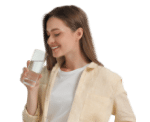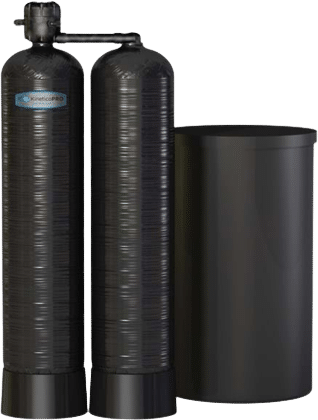Answering DFW’s Common Water Filtration Questions
At Shelton’s Water, we believe that our customers deserve access to the cleanest, best-tasting water possible. Whether you’re a business owner in Arlington or a resident in Weatherford — we’re here for the DFW Metro. Our team is committed to providing long-lasting, trusted water treatment solutions, which is why we’ve organized this list of common questions.
Do I Need A Whole-Home Filtration System?
Throughout cities in the Dallas Fort Worth Metro, tap water is treated and tested for safety. Despite these regulations, many of our customers enjoy the peace of mind that comes from a Kinetico water filtration system installed for their home’s individual water supply.
What Is The Difference Between Hard Water And Soft Water?
Municipal water throughout Texas contains high levels of calcium and magnesium, which can reduce appliance efficiency and leave a chalky residue on surfaces. When the minerals are removed from your water supply, you’re left with soft water — a gentler, fresher alternative.
How Does Water Softening Work?
Kinetico water softeners function through an ion exchange — replacing hard minerals with sodium ions found within special resin beads. The end result is softer water for your home.
Is Reverse Osmosis Water Better Than Filtered Water?
Neither of these systems produces water that’s “better” than the other, but they offer different levels of filtration. Whole-home filters are designed to remove larger particles from your drinking water, like dissolved metals and minerals. Reverse osmosis systems utilize specialty filters to eliminate contaminants down to the viral level.
What’s The Best Water Treatment System?
Reverse osmosis water filters are known for providing thorough filtration in DFW homes, while water softeners benefit properties that experience hard water issues. There’s no such thing as “the best” water treatment system — but there is “the best” system for you. Let our team walk you through your options — reach out today!
Where Should You Install A Whole-Home Water Filter?
You should install a whole-home water filter where the main water line enters your home, typically near the water meter or where the line connects to your plumbing system. This placement ensures all water used throughout your home is filtered.
Can A Water Filtration System Improve The Taste And Smell Of Tap Water?
Yes, a water filter helps improve the taste and smell of tap water. They’re capable of removing contaminants like chlorine, heavy metals and other impurities that can cause unpleasant odors and flavors.
How Can I Test My Home’s Water Quality In Arlington?
Shelton’s Water offers free water analyses in Arlington and surrounding Dallas-Fort Worth communities. We help identify your water quality and provide comprehensive filtration solutions.
What Are PFAS, And Should I Be Concerned About Them In My Drinking Water?
PFAS (Per- and polyfluoroalkyl substances) are chemicals used in products like non-stick cookware and waterproof fabrics. They can contaminate drinking water and may pose health risks, including reproductive and immune system issues. If you’re concerned, it’s best to have your water tested and consider installing a filtration system that can remove PFAS.
How Do Air Filtration Systems Work?
HealthWay Deluxe Air Filters from Shelton’s Water work by using a multi-stage filtration process. Air is first drawn through a pre-filter to capture larger particles. It then passes through a secondary filter, which traps smaller particles like dust and pollen. Finally, purified air is circulated back into your home to improve indoor air quality.
What Are The Benefits Of Using An Air Filtration System?
Using an air filtration system offers several benefits, including:
- Improves air quality by reducing dust, allergens and pollutants
- Reduces allergy and asthma symptoms
- Eliminates odors, bacteria and viruses
- Promotes a healthier home environment
- Protects HVAC system by reducing dust buildup and improving efficiency
How Often Should I Replace Or Clean My Air Filters?
Air filters should typically be replaced or cleaned every 30-90 days, depending on overall usage and if you have pets in your home. Regular monitoring is important to ensure your system efficiently maintains good IAQ.
Is Reverse Osmosis Water Safe To Drink Every Day?
Yes, reverse osmosis water is safe to drink every day. It effectively removes contaminants like bacteria, chemicals and heavy metals, providing cleaner water. However, it’s important to ensure your RO system is well-maintained to keep it working properly.
For more information on your pressing water filtration and air quality questions, reach out to Shelton’s Water today!





